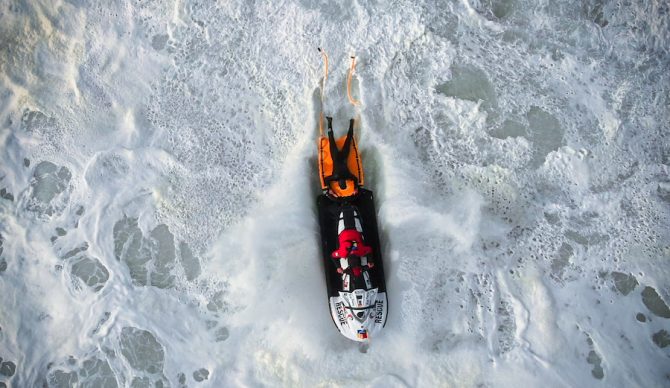
Drake Stanley jets Grant ‘Twiggy’ Baker to safety. Photo: Abe Alarcon.
Big waves have a certain mystique to them, at least when viewed from the beach or via the internet. When you get into the thick of things, with tons of water moving around, the mystique can fade pretty quickly. Now add the typical lineup chaos you might experience at a crowded break like Malibu or Pleasure Point, and shit gets downright horrifying.
With more and more people getting into surfing in recent years, surprisingly – or not – there’s also more and more people taking on the waves of Maverick’s, Jaws, and Nazaré. And unlike your local beachbreak, the crowds at big-wave locations can produce some truly life-threatening scenarios. I caught up with several rescue teams to learn about what these storied locations look like from the perspective of the rescuer, and the efforts being made in recent years to manage the crowds of chargers who come to test themselves on some of the biggest and gnarliest waves in the world. I basically wanted to find out where these rescue teams come from and why they do what they do.
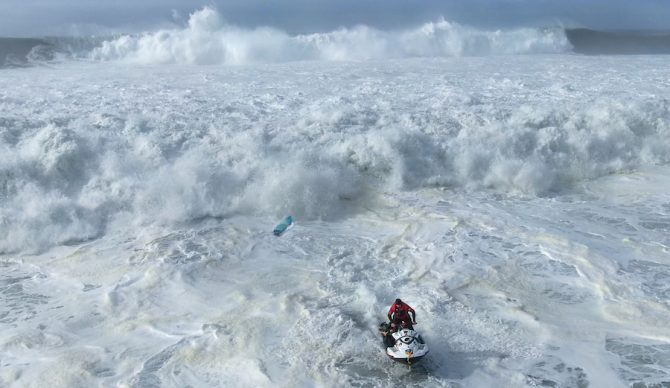
It takes a decent bit of training to know how to be rescued as well. Sometimes, with multiple walls of whitewater bearing down on you, you gotta ditch the board. Photo: Abe Alarcon.
Like many things in our sport, the increase in popularity of big-wave surfing and the issues it presents boil down to respect. For us “average joe” surfers, there’s often a casual “let’s just go to the beach” attitude. That attitude doesn’t exactly translate to the big-wave scene. At these breaks, preparation starts when large swells are still storms in the Atlantic and Pacific oceans, and the lighthearted “let’s go surfing” mantra is traded for one more similar to preparing for war. Gear is checked and plans are made, as well as backup plans. At least that’s how it should be.
In the past couple of years, there’s been an outcry over the disparity between the amount of surfers in the water at these locations and the Jet Ski operators tasked with rescuing them should things go awry. ““This year at Jaws there were 60 surfers in the water and like two skis running safety,” Albee Layer told ASN in 2019. “The other skis were driving photographers.”
Ski drivers can make good money giving photographers a front seat to the action, and often make nothing if they choose to run water safety, unless they’re being paid as part of a team tasked with looking out for an individual or a group of surfers. Pro surfers like Kai Lenny and his brother Ridge, as well as Ian Walsh and his brothers, are able to put together their own rescue teams, which is for the best in many ways, as they’re part of a core group really pushing it (and consequently needing to get rescued more).

Water safety’s about to be busy at Pe’ahi… Photo: Guy Mac.
Even with your own team, things can get messy. “If something goes wrong for someone that has not organized water safety for themselves they’re essentially putting blind faith in a member from another team taking their attention off their surfer(s) and risking themselves, as well as their Jet Ski, to save them,” Ridge Lenny told me via email. To combat this issue, rescue ski operators are organizing into groups like the Maverick’s Rescue Team and the Peahi Hui, giving themselves a platform from which to organize efforts with first responders and make contact with surfers heading to the break they oversee.
“Our rescue guys were being overwhelmed with people coming in off the rocks and just showing up,” says Daniel Goldberg of the Peahi Hui, a group that oversees water rescue at Jaws on Maui. “What organizing as the Peahi Hui does is put a bit of pressure on the guys coming in to say look, at least contact us before you come so we can be prepared.”
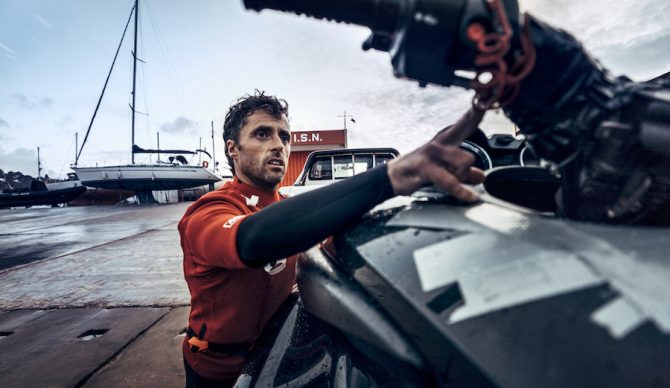
Sergio Cosme, also known as the “Guardian Angel of Nazaré” knows what it takes to be a rescue driver. Photo: Red Bull Content Pool.
It takes a lot to be a rescue ski operator. “As I tell people, a pro surfer doesn’t make a first responder and a first responder doesn’t know the ocean like a pro surfer, so it really takes somebody that has both that background of understanding ocean dynamics, and then having the medical licenses on top of that to be able to do the job the right way,” says Drake Stanley of the Maverick’s Rescue Team. These teams are certainly doing it for the love. “We wouldn’t be doing it if we didn’t love it,” says Goldberg. “Some guys just like being out there, or the feeling of going in and getting somebody. Some guys like their name to be dropped, and some guys actually have minor sponsorships from companies. I’m out there to actually surf, but also to organize water safety, because for me if there isn’t safety, there’s no reason for the surfers to be there. It’s just too too heavy.”
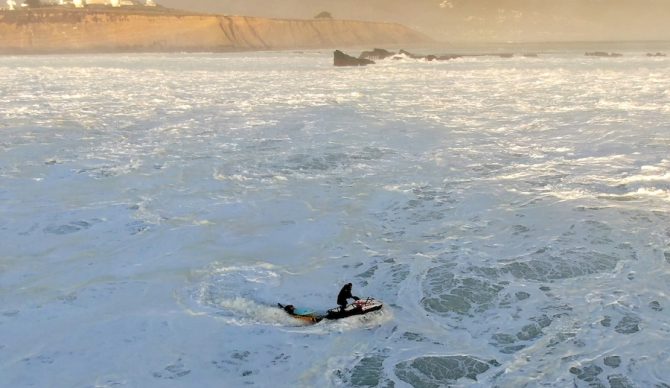
Drake Stanley snags Ian Walsh from the danger zone as a massive Maverick’s wave casts a shadow on the scene. Photo: Abe Alarcon.
At Maverick’s, Drake Stanley is one of the key members of the Maverick’s Rescue Team, running water rescue out there for the past seven years, and he’s seen the break change a lot in that time. “Inflation vests being available to the public have changed the scene a lot,” says Stanley, echoing a sentiment I’ve heard before from the Maverick’s community. The Mavericks Surf Awards have worked to keep the “go straight and inflate” mentality out of the lineup at Mavs, only accepting entries to the contest where the surfer actually make the wave that they rode. They’ve also been working with photographers to organize overwatch from the cliffs to have an extra pair of eyes on the break from a different angle. The team at Powerlines Productions often fills that role as well.

Daniel Silvagni to the rescue. Photo: Peahi Hui.
In the past two years, the water rescue guys at Jaws have organized themselves into the Peahi Hui, in part as a response to the difference in numbers between surfers and rescue operators at Pe’ahi mentioned above, but also to promote coordination between the different rescue groups out there like the teams who work with the local and visiting pros. “When we have a swell coming we have a big meeting and we try to get representatives from all the pro surfer groups like the Walshes and the Lennys. We all agree on the radio channels we’ll be on and when we’ll launch so we know who’s out there, figure out spotters on the cliffs with some of the local photographers. So even though there’s a few different groups, it’s all one big family.”
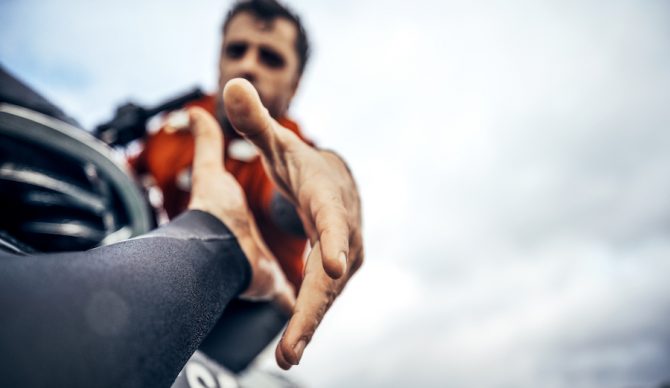
Sergio Cosme, the “Guardian Angel of Nazaré” earning his nickname. Photo: Red Bull Content Pool.
Nazaré has, and always will be, more of a tow-in location than a paddle zone, meaning if you want to get out there on the big days, water safety, or at least a Jet Ski driver, is basically mandatory. Unless there’s a contest going on, drivers and surfers organize themselves into teams that mostly look after themselves, even though they’re always ready to help those in need.
For the most part, there is no centralized “Nazaré Water Patrol” says Jet Ski driver Sergio Cosme. Cosme has been doing water rescue at Nazaré for almost 10 years, and in that time he’s whipped Rodrigo Koxa into the biggest wave ever ridden on the planet (although we’ll see if that record stands after this year), and established himself as the “Guardian Angel of Nazaré” with daring rescues in the water.
Currently, he’s able to do his water-safety work full time between the work he does at Nazaré, other contests, and sponsorships, but he doesn’t work with just anyone. “If the surfer and driver aren’t connected and don’t know how each other operates, it can be dangerous,” says Cosme. “There is no safe zone out at Nazaré. When you’re out there you can have water coming at you from basically 360 degrees.” His favorite pro surfer to work with, actually, is his fellow countryman Nic von Rupp. “I can trust him to drive me in any kind of conditions,” says Cosme. “But for me as a driver I would love to see something like a Nazaré Water Patrol, a safety team that is always working together no matter if it’s a big swell or if it’s a contest.”
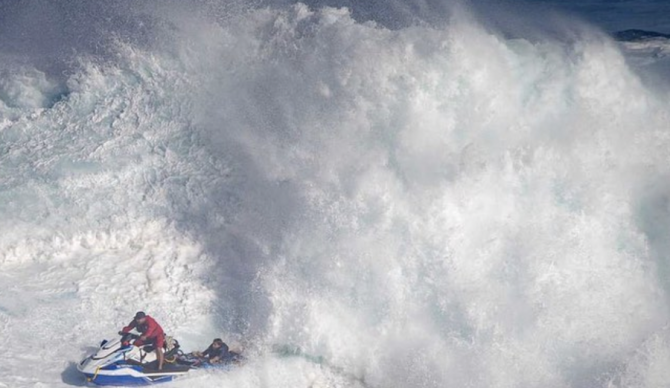
Kurtis Chong Kee goes deep to scoop Kai Lenny from the jaws of, well, Jaws. Photo: John Patao//Peahi Hui.
So say you want to get out there at a break like Maverick’s or Jaws, and let’s just assume you’ve got the chops to do so. What else should you be doing? As mentioned, the Peahi Hui encourages anyone coming in to contact them beforehand, to set up water safety, photographers, etc. Drake Stanley says it’s important to take some water safety classes at the big wave you’re hoping to tackle beforehand to learn the ins and outs of that wave. Maverick’s Rescue offers a few different such classes.
And at the very least, give a little back to those who are risking it all to save your ass, and doing it for the love. Even if you don’t surf big waves, if you want to support the incredible work that these guys are doing, check out the Maverick’s Rescue Team fundraiser, which is currently just $950 under its $7,000 dollar goal. Funds will be put towards Jet Ski repair, new safety kits, and the purchase of an AED for the team. Always important things to have in these treacherous lineups.

